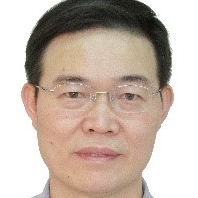Feature Papers in Materials Physics
A special issue of Materials (ISSN 1996-1944). This special issue belongs to the section "Materials Physics".
Deadline for manuscript submissions: closed (20 June 2023) | Viewed by 45580
Special Issue Editors
Interests: photocatalytic materials; nanostructured titanium dioxide; carbon nanomaterials; metal oxides
Special Issues, Collections and Topics in MDPI journals
Interests: crystal growth of silicon materials; defects and impurities in microelectronic silicon materials; silicon-based photonics; light-emitting devices based on oxide semiconductors; semiconductor materials physics
Interests: oxide materials for energy applications; thermoelectrics; superconductors; directional growth of oxide materials; laser texturing of oxide materials; ceramic materials processing
Special Issues, Collections and Topics in MDPI journals
Special Issue Information
Dear Colleagues,
Materials physics has been one of the most vivid fields in materials research that has played a key role in shaping and advancing modern materials from both a fundamental and applied perspective. This Special Issue seeks high-quality feature papers on materials physics that provide insights into and highlight the latest progress and innovative developments in materials fabrication and processing, characterization, integration, and performance evaluation in existing and emerging technologies in diverse fields ranging from mechanics, electronics, and photonics to solar energy conversion and environmental engineering.
As Guest Editors of this Special Issue, we cordially invite you to submit your recent work, including original research manuscripts and comprehensive review articles that significantly advance our current understanding of materials properties and/or applications for a wide range of nanostructured and functional materials. The topics of interest include but are not limited to:
- Metals and alloys
- Ceramics and coatings
- Semiconductors
- Metal oxides
- Optical and photonic materials
- Low-dimensional materials
- Plasmonics and metamaterials
- Magnetic materials
- Superconducting and quantum materials
- Ferroelectrics, multiferroics, and magnetoelectrics
- Thermoelectrics
- Polymers
- Metal–organic materials
- Amorphous solids
Prof. Dr. Vlassios Likodimos
Prof. Dr. Xiangyang Ma
Prof. Dr. Andres Sotelo
Guest Editors
Manuscript Submission Information
Manuscripts should be submitted online at www.mdpi.com by registering and logging in to this website. Once you are registered, click here to go to the submission form. Manuscripts can be submitted until the deadline. All submissions that pass pre-check are peer-reviewed. Accepted papers will be published continuously in the journal (as soon as accepted) and will be listed together on the special issue website. Research articles, review articles as well as short communications are invited. For planned papers, a title and short abstract (about 100 words) can be sent to the Editorial Office for announcement on this website.
Submitted manuscripts should not have been published previously, nor be under consideration for publication elsewhere (except conference proceedings papers). All manuscripts are thoroughly refereed through a single-blind peer-review process. A guide for authors and other relevant information for submission of manuscripts is available on the Instructions for Authors page. Materials is an international peer-reviewed open access semimonthly journal published by MDPI.
Please visit the Instructions for Authors page before submitting a manuscript. The Article Processing Charge (APC) for publication in this open access journal is 2600 CHF (Swiss Francs). Submitted papers should be well formatted and use good English. Authors may use MDPI's English editing service prior to publication or during author revisions.
Keywords
- metals and alloys
- ceramics and coatings
- semiconductors
- metal oxides
- optical and photonic materials
- low-dimensional materials
- plasmonics
- metamaterials
- magnetic materials
- superconducting and quantum materials
- ferroelectrics, multiferroics
- magnetoelectrics
- thermoelectrics
- polymers
- metal–organic materials
- amorphous solids








